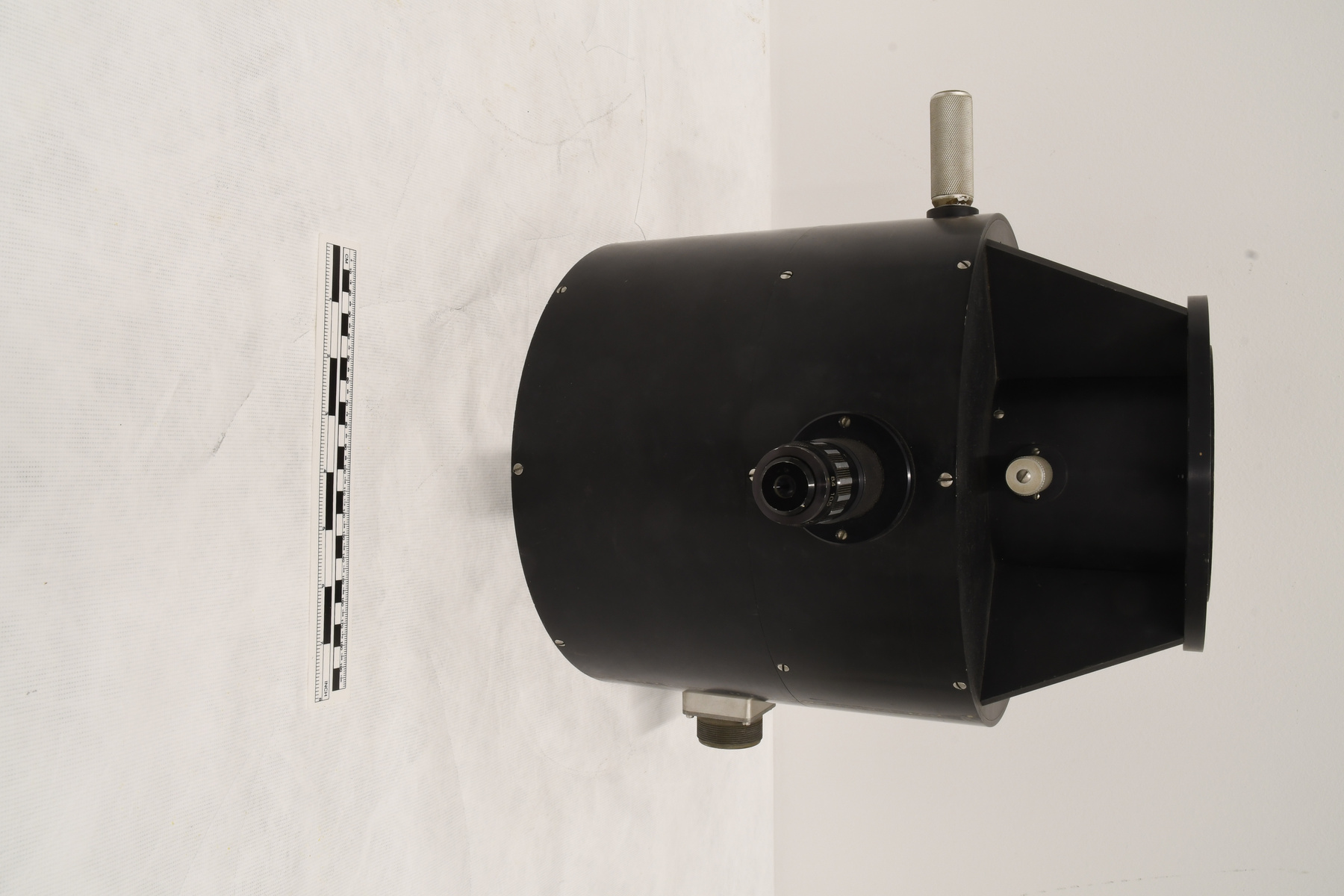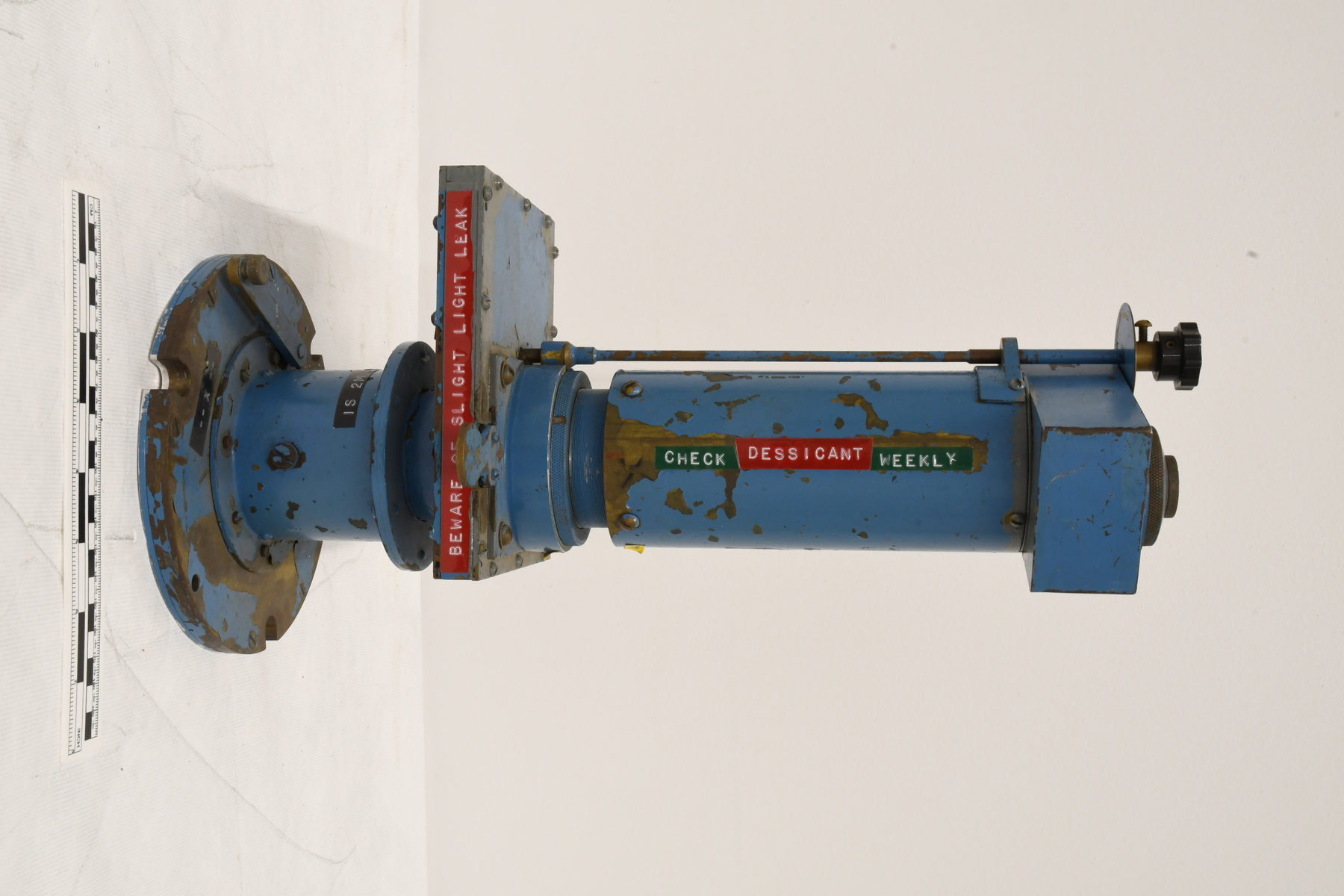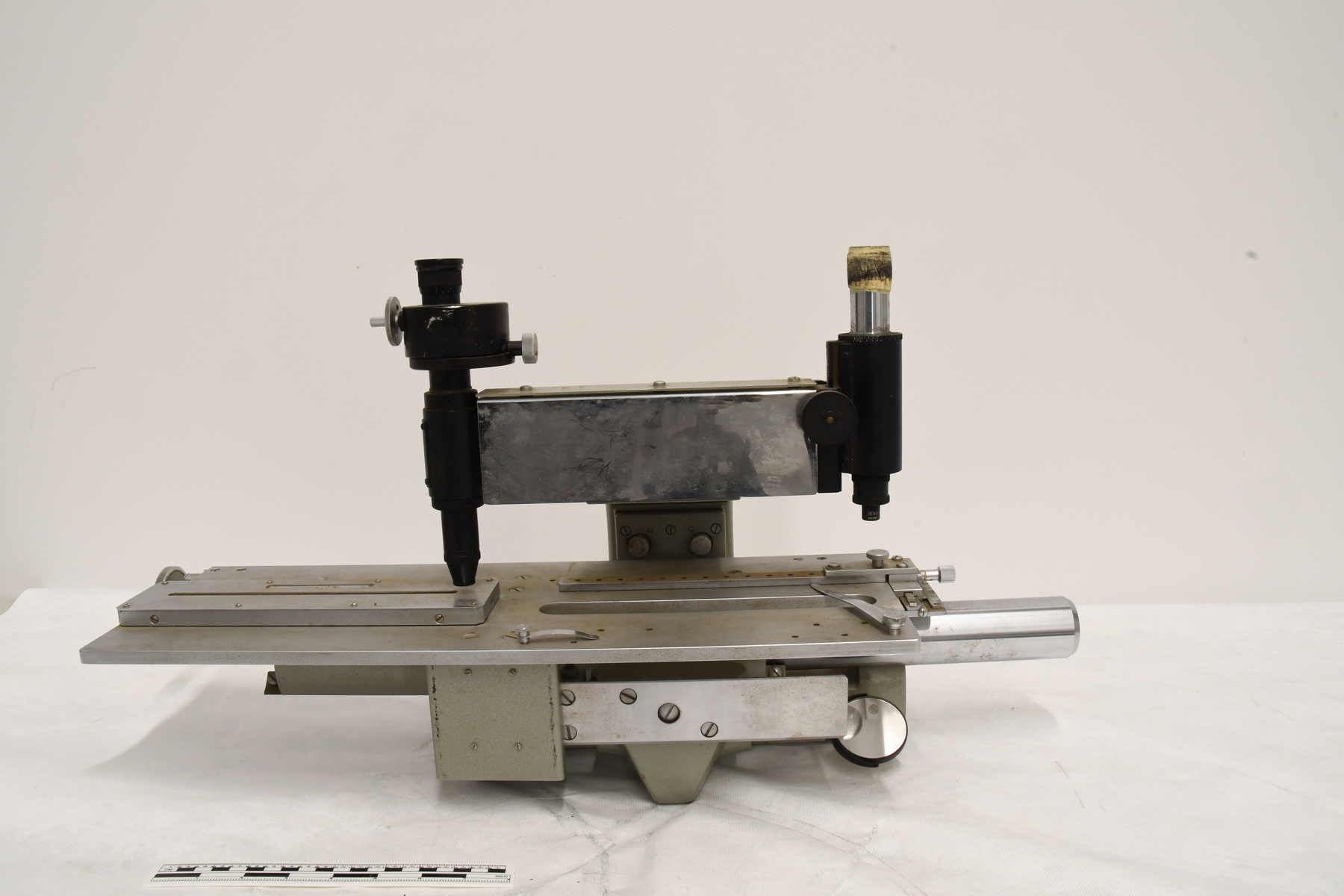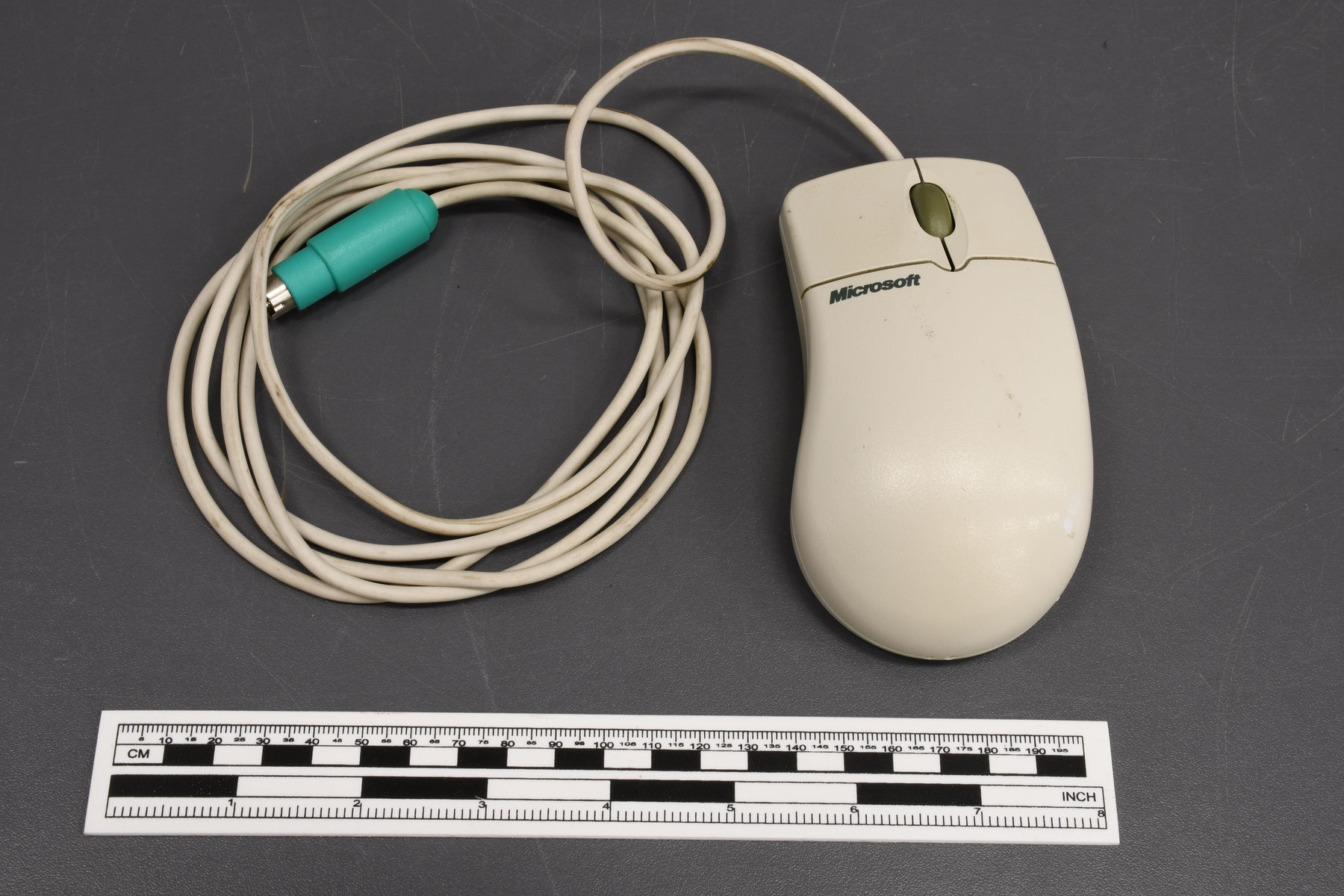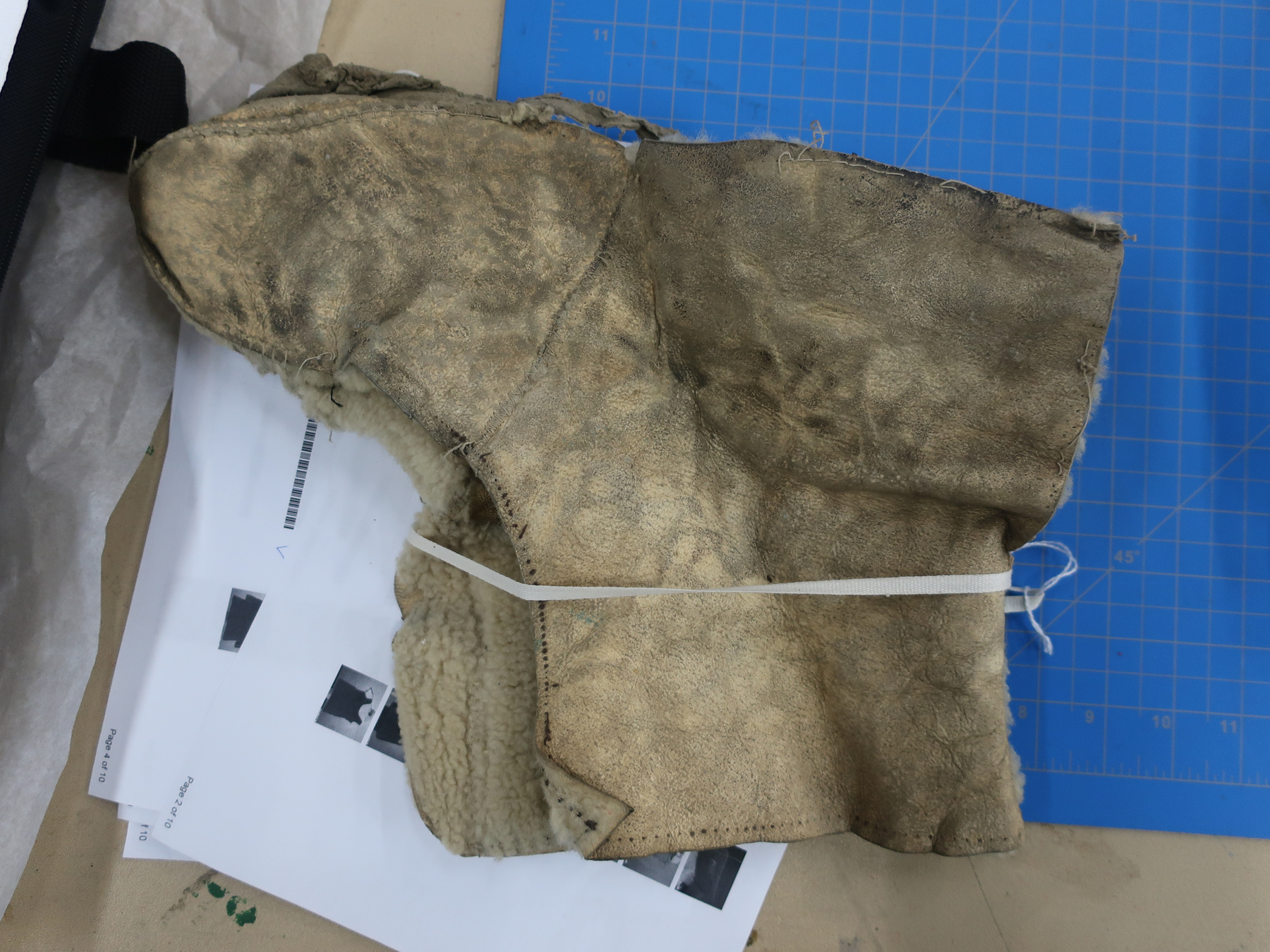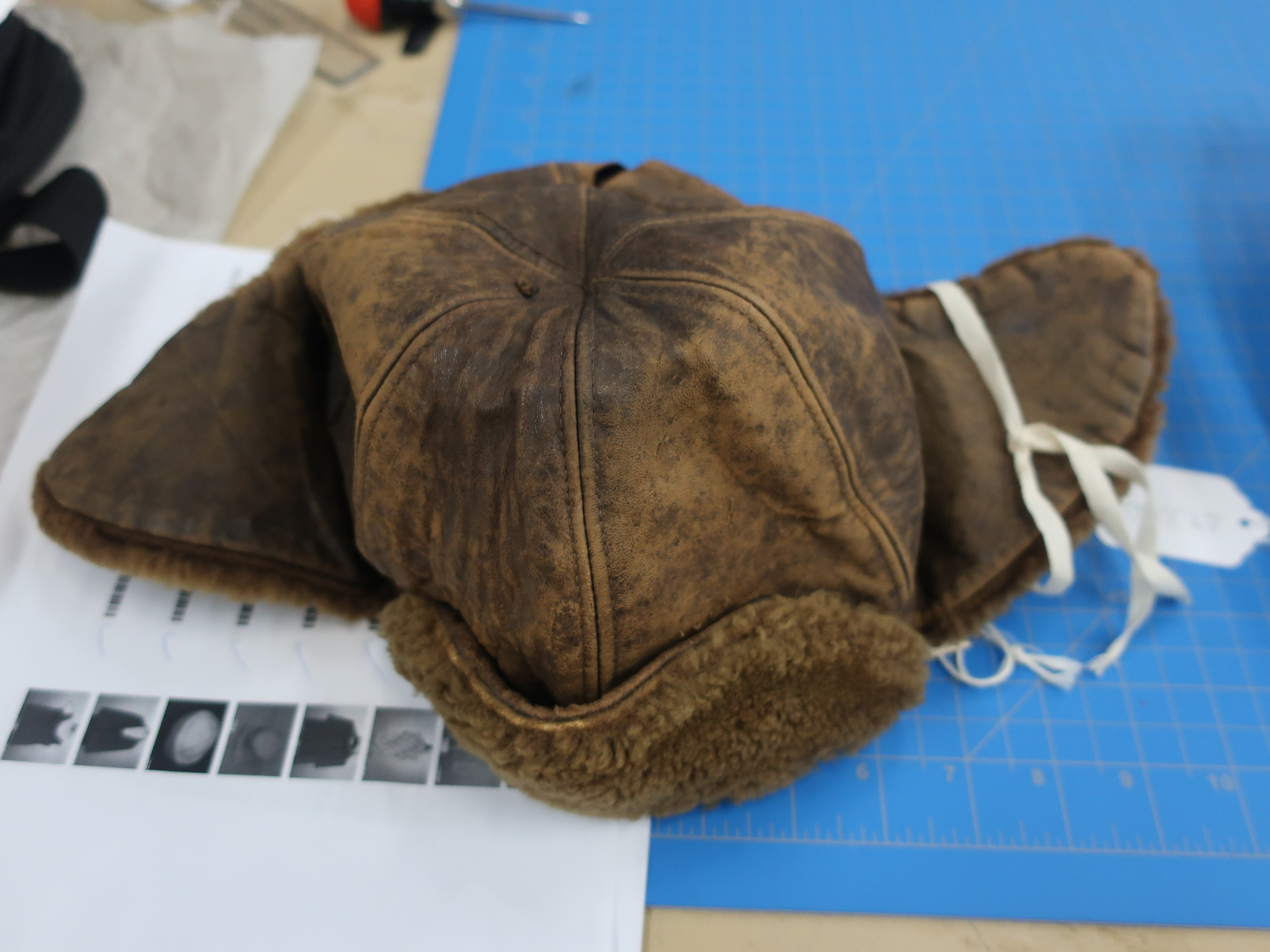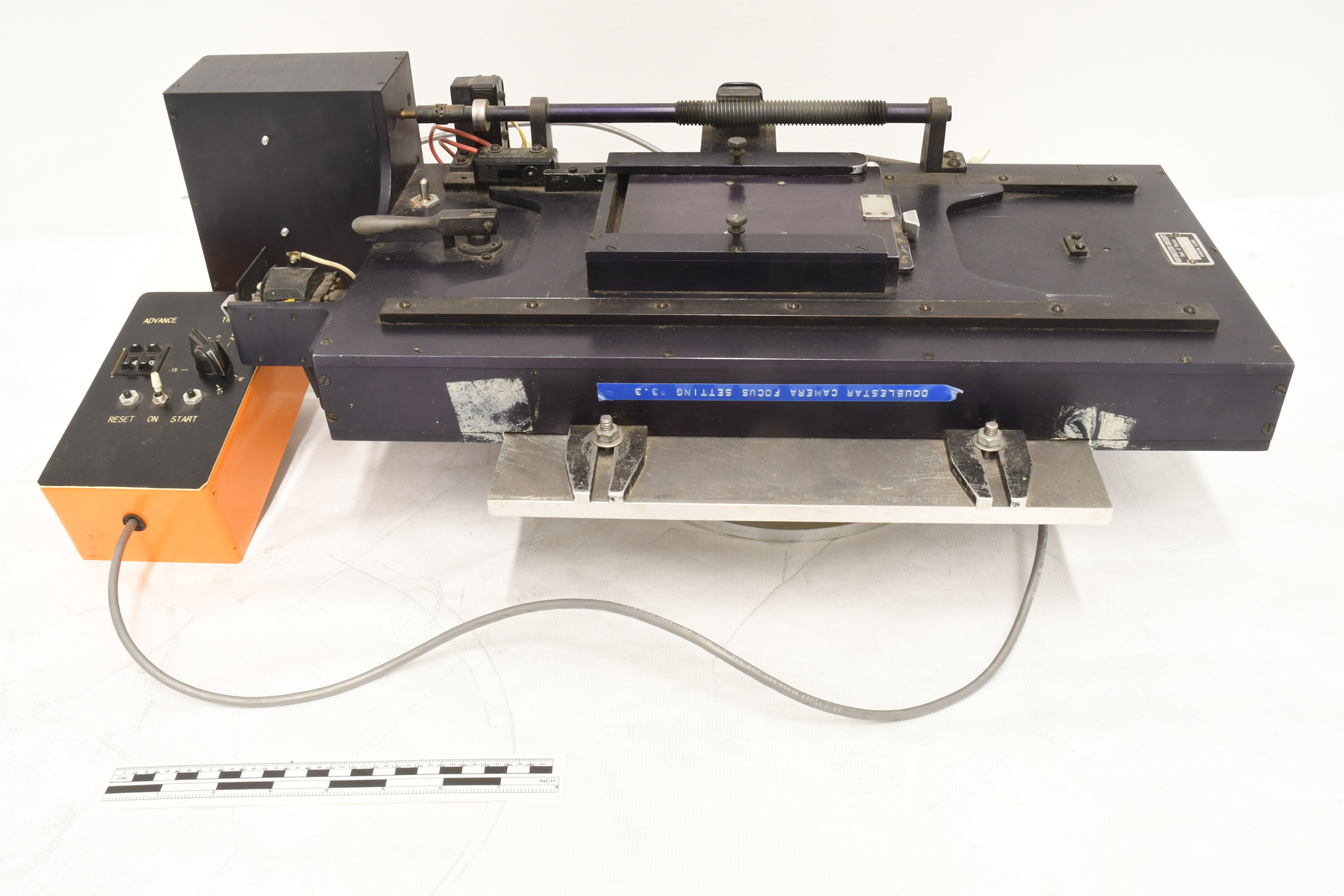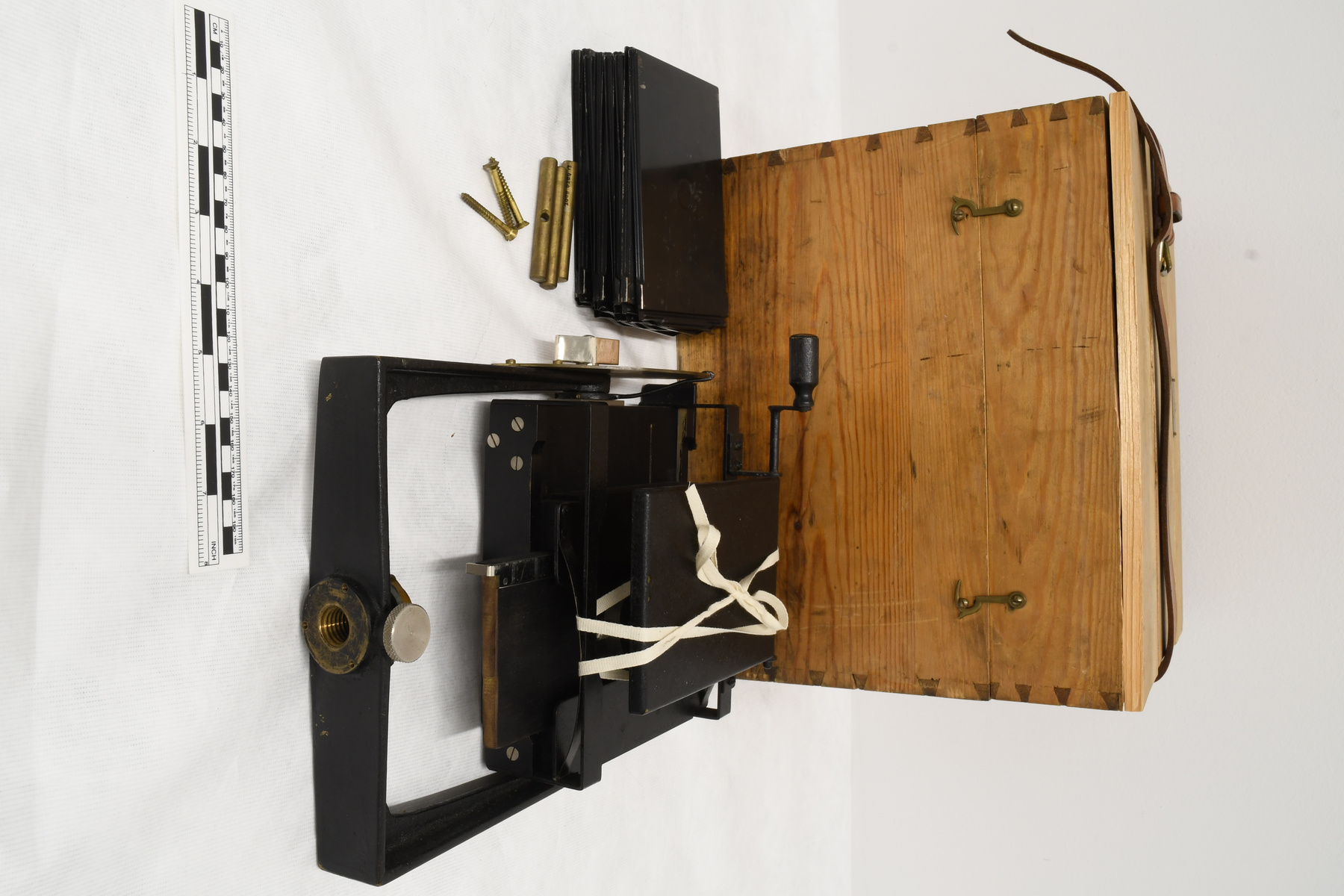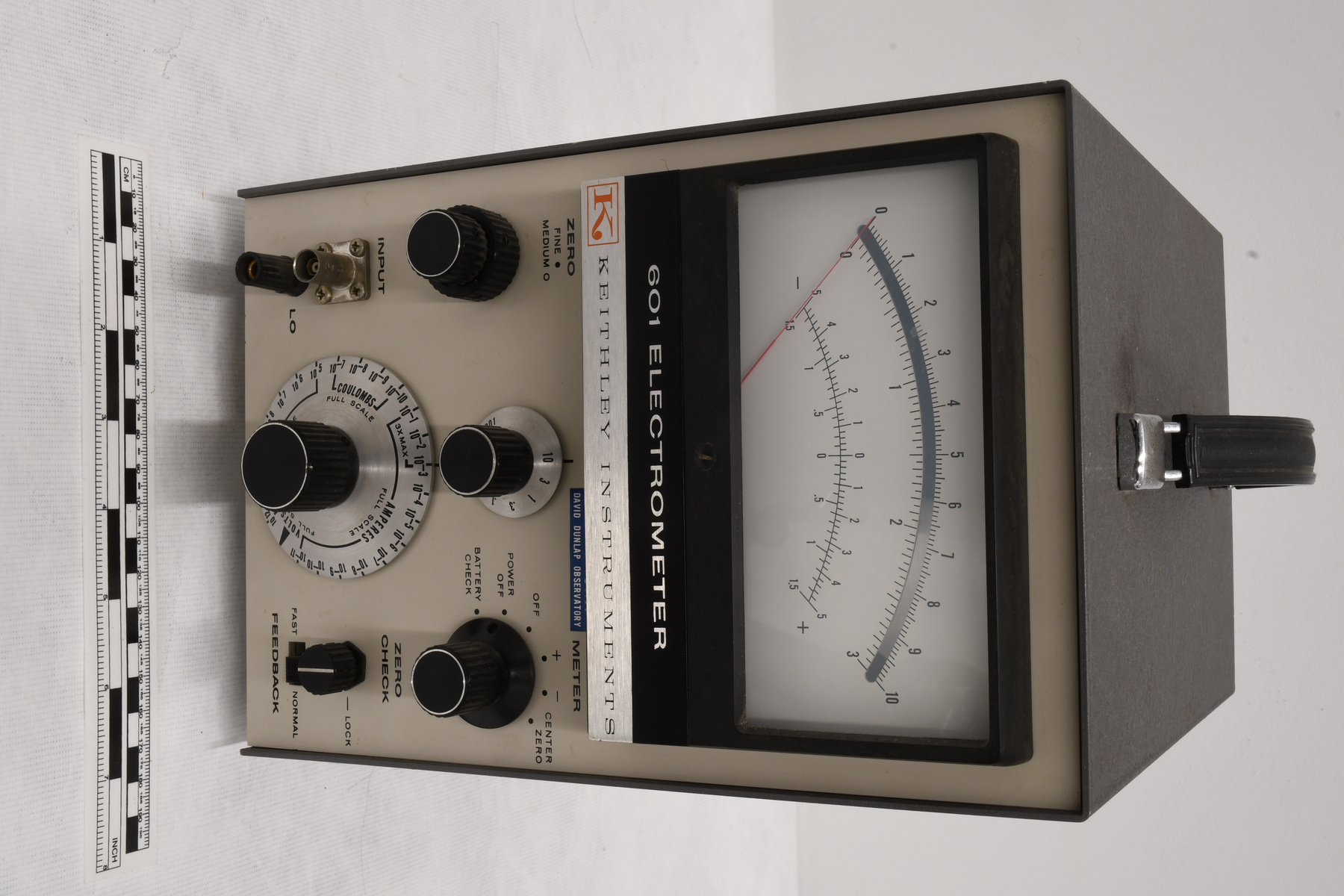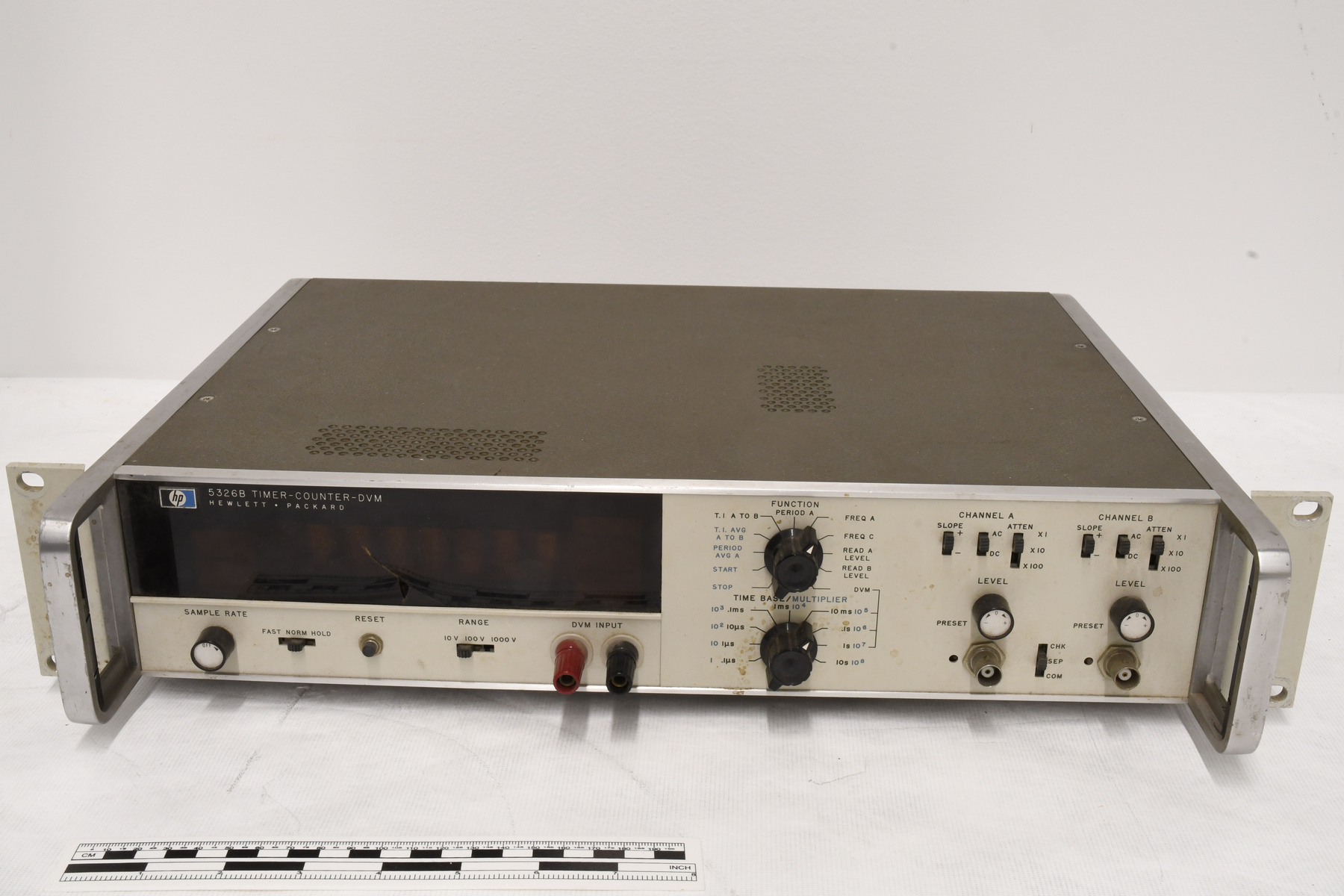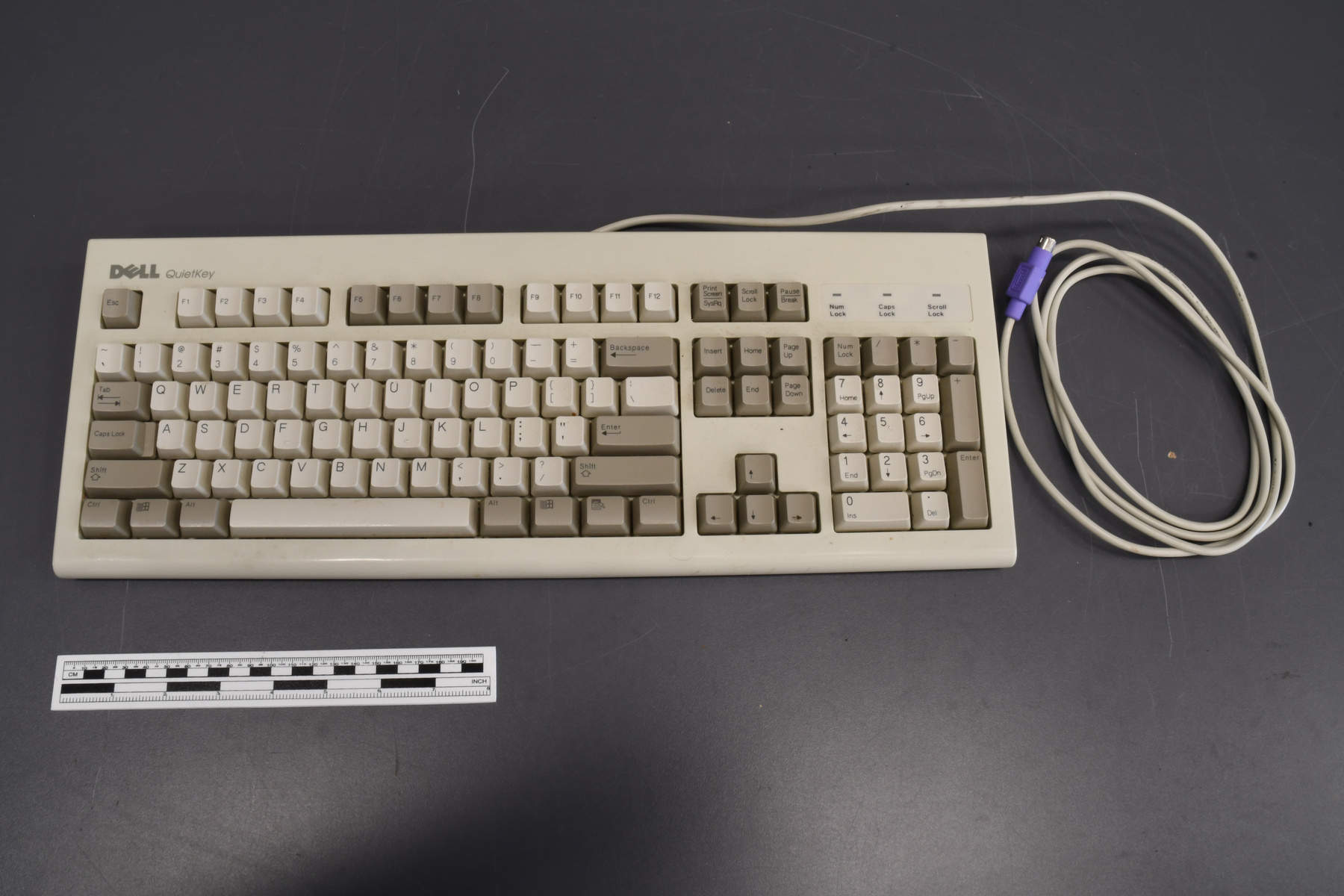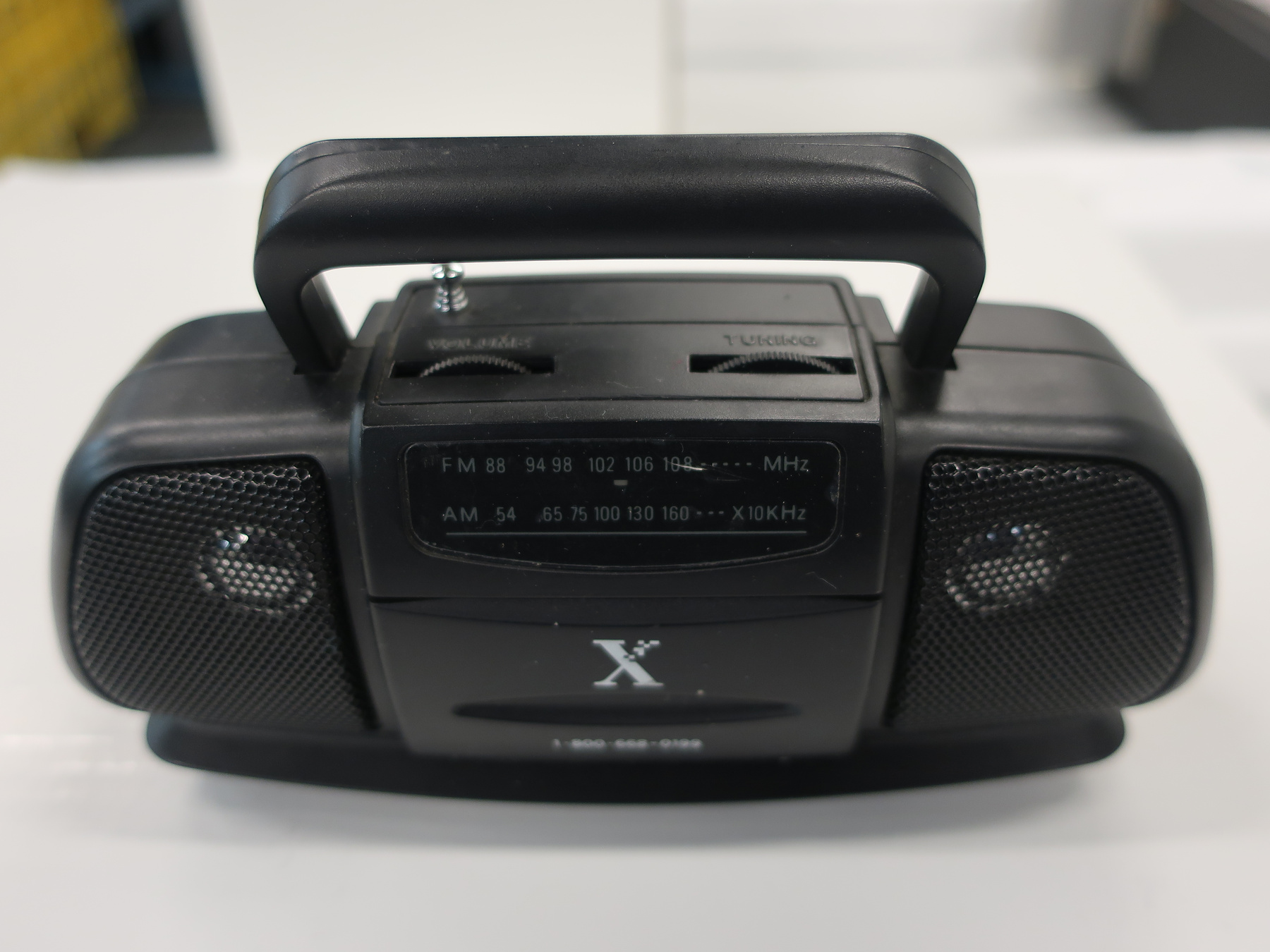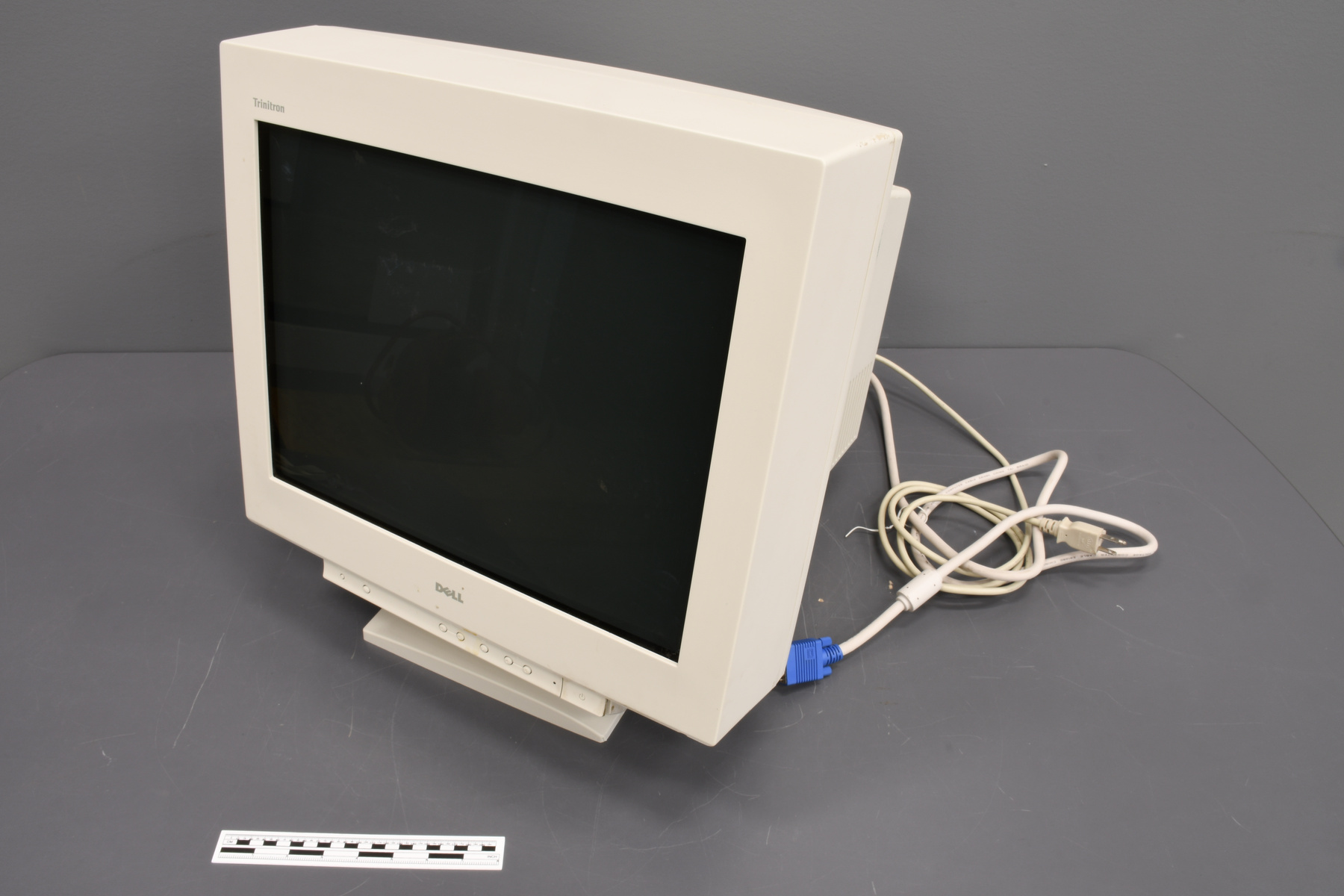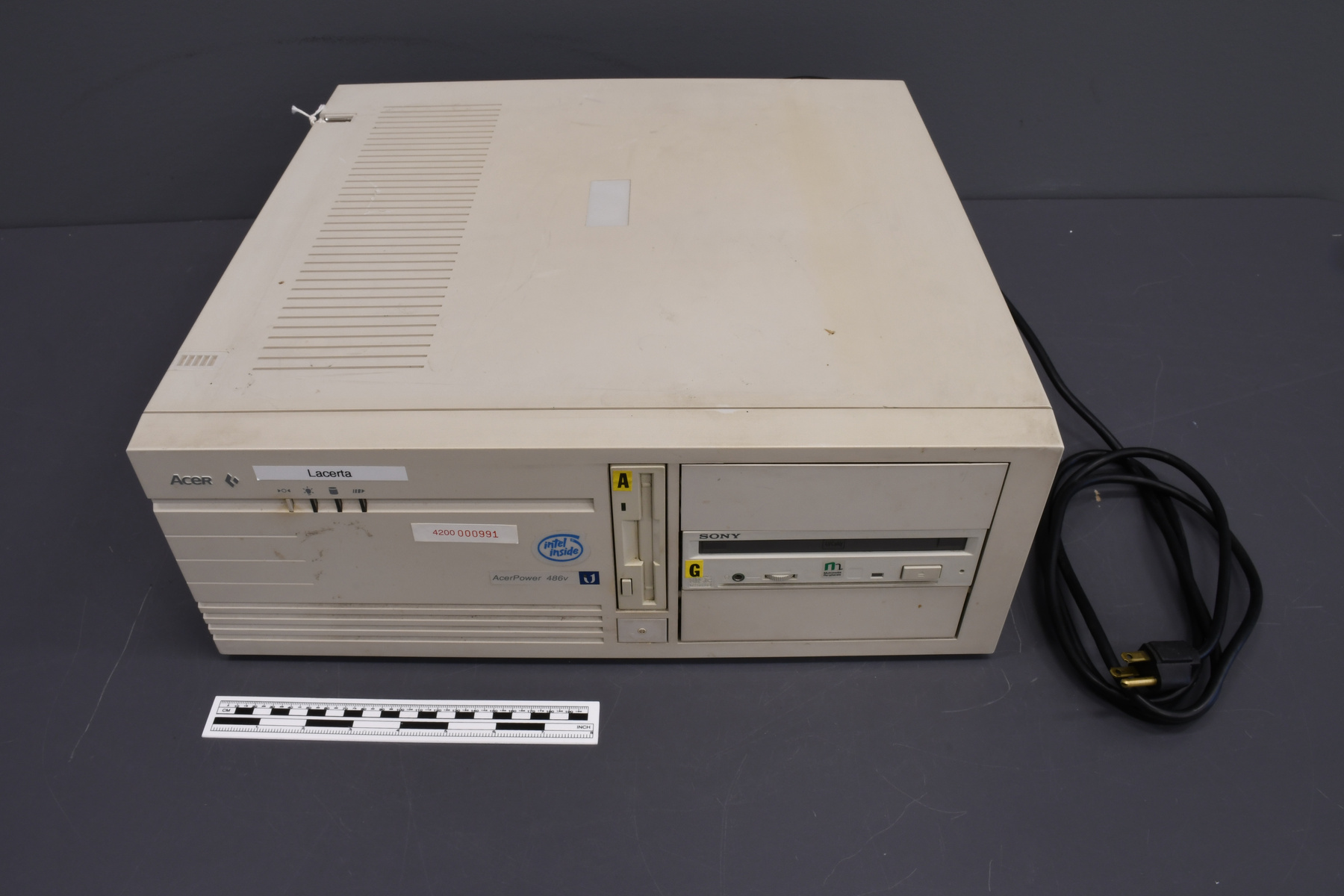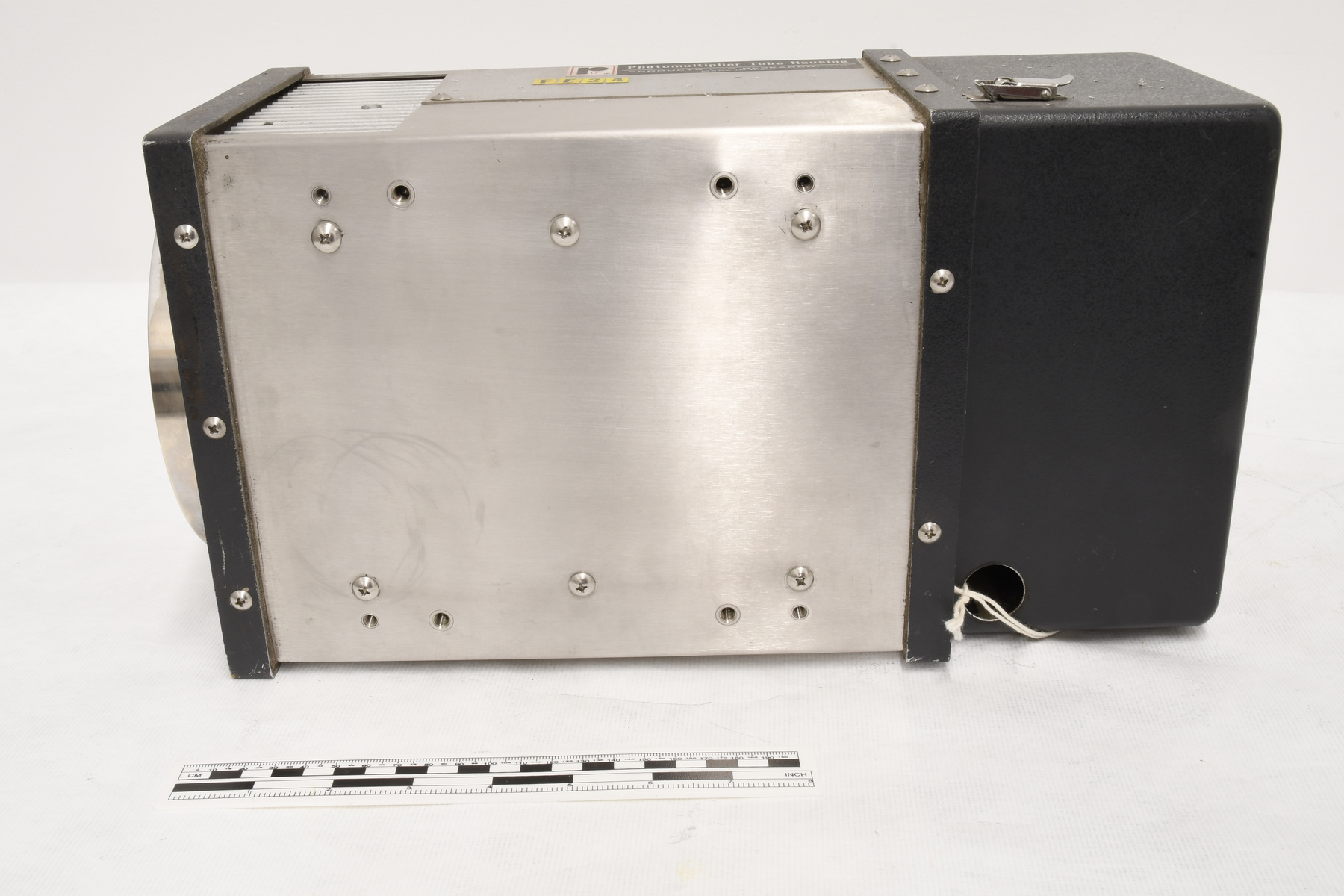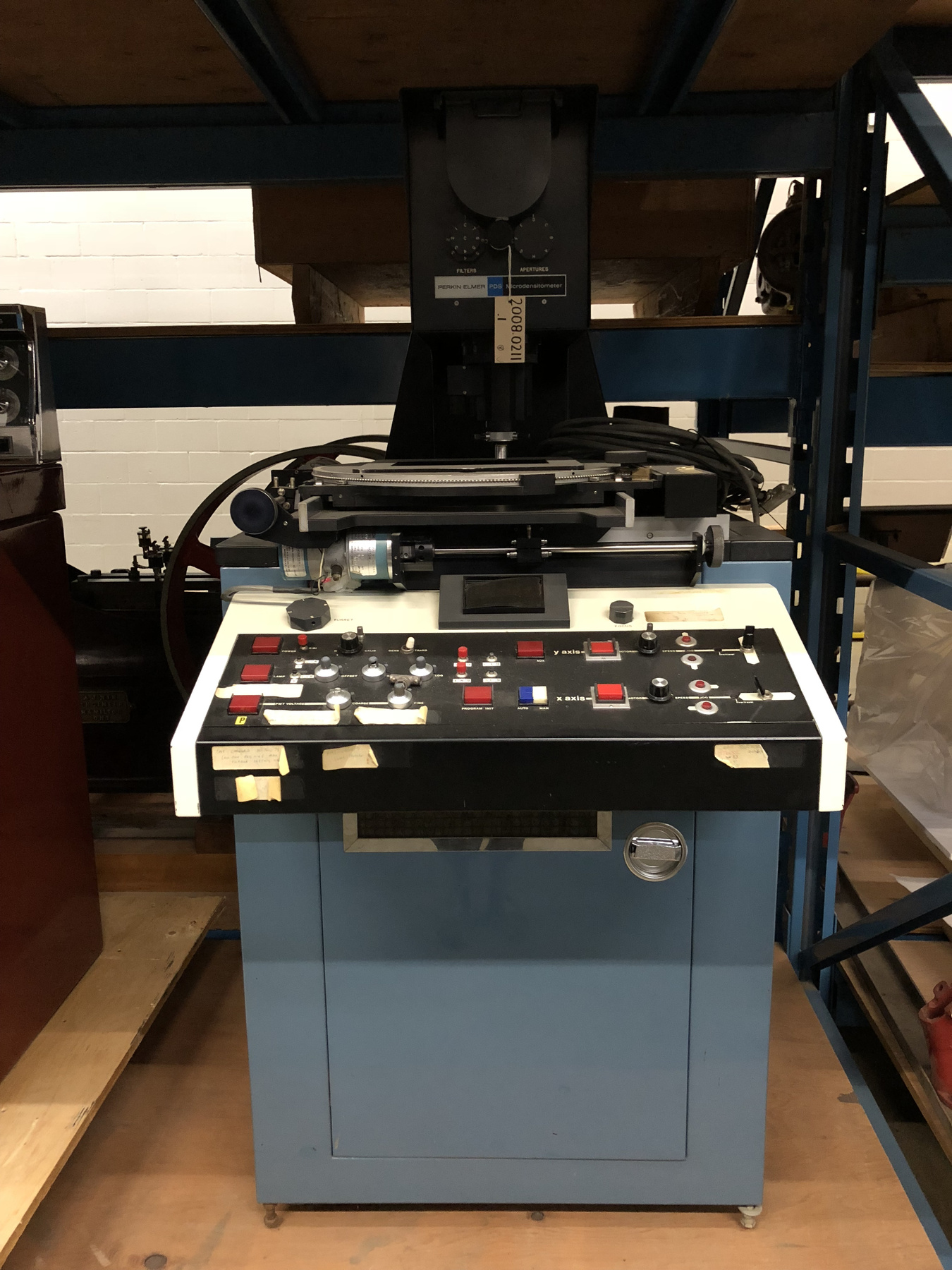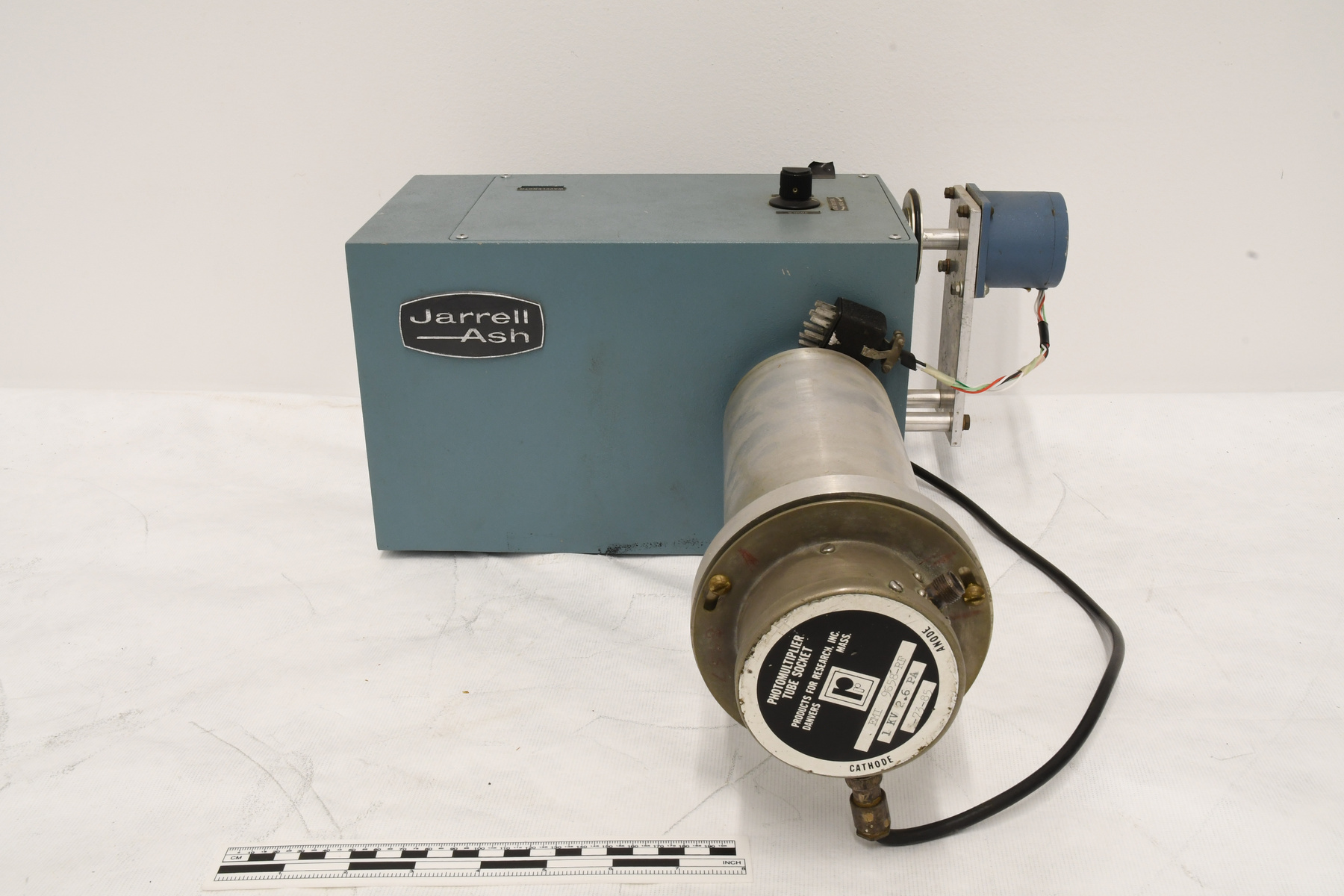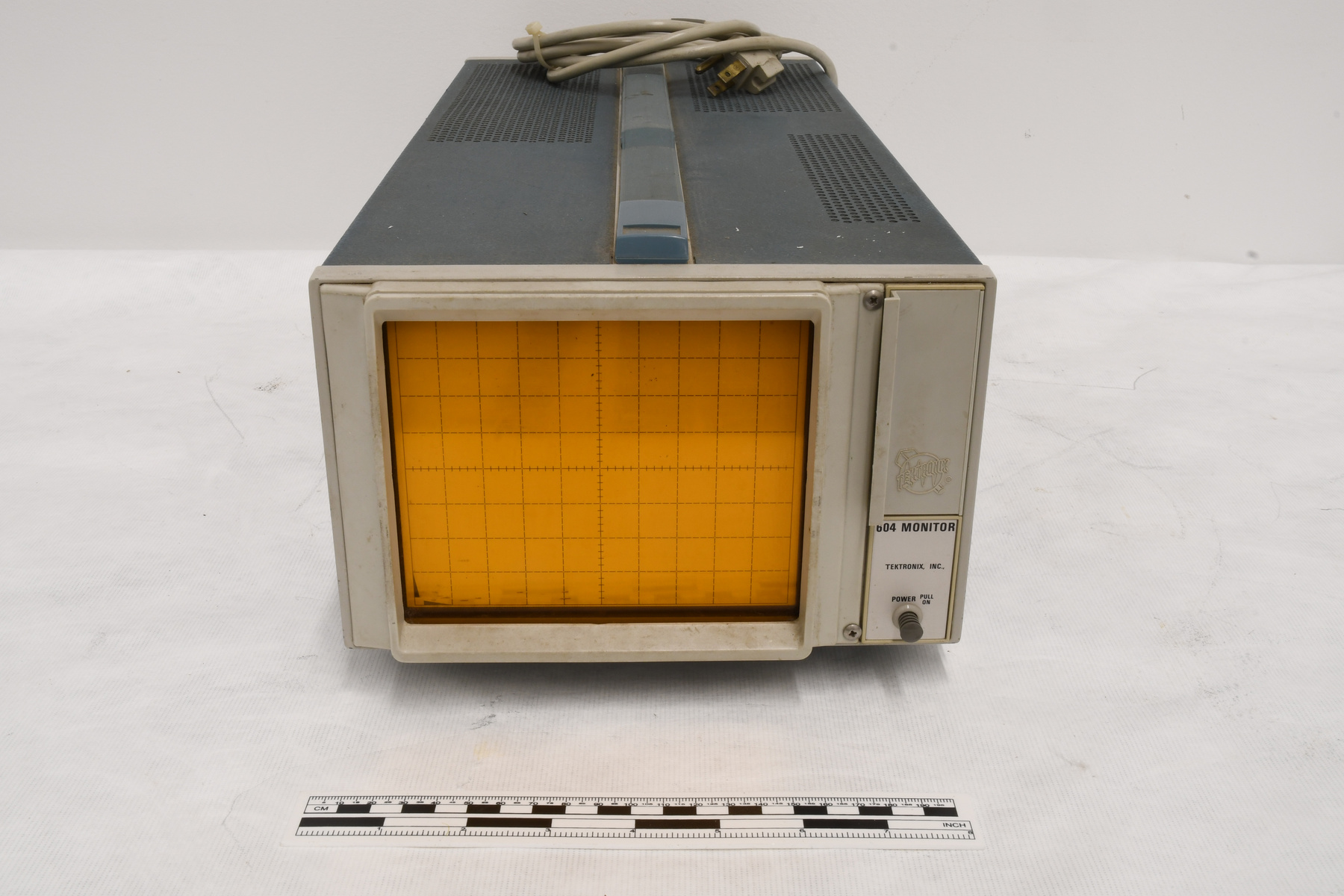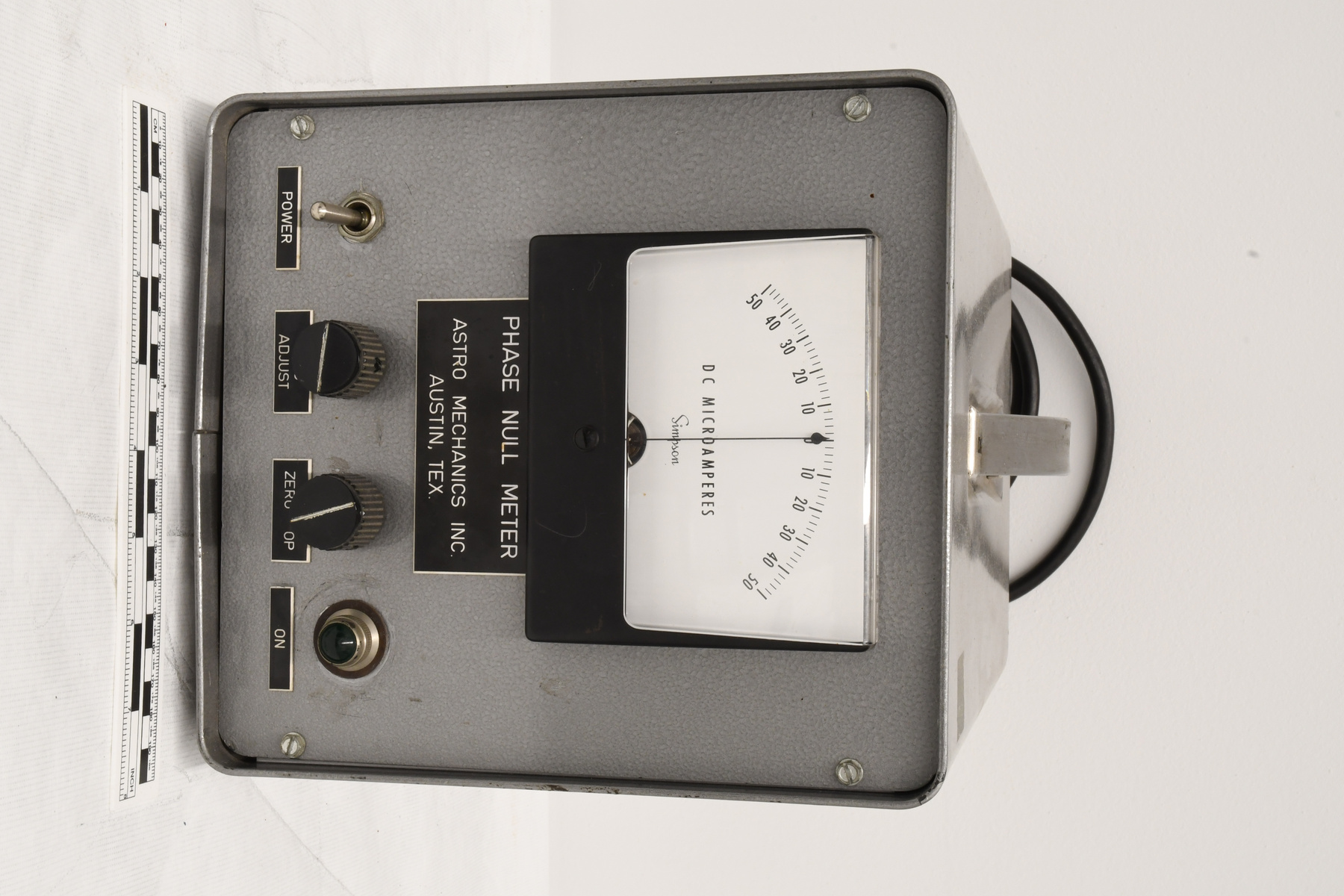Meter, phase null
Utiliser cette image
Puis-je réutiliser cette image sans autorisation? Oui
Les images sur le portail de la collection d’Ingenium ont la licence Creative Commons suivante :
Copyright Ingenium / CC BY-NC-ND (Attribution-NonCommercial 4.0 International (CC BY-NC 4.0)
ATTRIBUER CETTE IMAGE
Ingenium,
2008.0185.001
Permalien:
Ingenium diffuse cette image sous le cadre de licence Creative Commons et encourage son téléchargement et sa réutilisation à des fins non commerciales. Veuillez mentionner Ingenium et citer le numéro de l’artefact.
TÉLÉCHARGER L’IMAGEACHETER CETTE IMAGE
Cette image peut être utilisée gratuitement pour des fins non commerciales.
Pour un usage commercial, veuillez consulter nos frais de reproduction et communiquer avec nous pour acheter l’image.
- TYPE D’OBJET
- S/O
- DATE
- Inconnu
- NUMÉRO DE L’ARTEFACT
- 2008.0185.001
- FABRICANT
- Astro Mechanics Inc.
- MODÈLE
- Phase Null Meter
- EMPLACEMENT
- Austin, Texas, United States of America
Plus d’information
Renseignements généraux
- Nº de série
- S/O
- Nº de partie
- 1
- Nombre total de parties
- 1
- Ou
- S/O
- Brevets
- S/O
- Description générale
- Metal casing, controls, parts/ Synthetic controls, dial casing, electrical cord covering, parts
Dimensions
Remarque : Cette information reflète la taille générale pour l’entreposage et ne représente pas nécessairement les véritables dimensions de l’objet.
- Longueur
- 35,0 cm
- Largeur
- 20,7 cm
- Hauteur
- 26,5 cm
- Épaisseur
- S/O
- Poids
- S/O
- Diamètre
- S/O
- Volume
- S/O
Lexique
- Groupe
- Astronomie
- Catégorie
- Recherche
- Sous-catégorie
- S/O
Fabricant
- Ou
- Astro
- Pays
- United States of America
- État/province
- Texas
- Ville
- Austin
Contexte
- Pays
- Canada
- État/province
- Ontario
- Période
- Inconnu
- Canada
-
An instrument used at the David Dunlap Observatory at the University of Toronto, one of Canada's most important astronomical observatories. The David Dunlap Observatory opened in 1935 as the result of a bequest from the wife of David Dunlap. The telescope was a 74 inch (188 cm) reflector built by Grubb Parsons of Newcastle-upon-Tyne in England. The 74 inch was then the largest telescope in Canada (surpassing the 72 inch telescope of the Dominion Astrophysical Observatory in Victoria) and became the second largest in the world after the 100 inch Hooker Telescope of the Mt. Wilson Observatory outside Los Angeles. DDO's reputation grew and following WWII, it began to graduate most of the astronomers produced in Canada with University of Western Ontario far behind. Beginning in the 1960s a number of other astronomy departments were created but UofT/DDO held its place, a position it probably still holds. The DDO had a good technical staff which gave them an advantage and, with most of the 1940s to early 1970s top astronomers coming from UofT, grants from NRC and then ENSERC were almost guaranteed and allowed UofT's top astronomers -- Hogg, van den Berg, Fernie, Bolton, Kamper, Martin, etc. to acquire or build some of the best equipment available in university observatories. For optical observatories, only the DAO had technical staff and budgets that surpassed those of DDO. In 2007, citing increasing light pollution, the University of Toronto announced plans to sell the Observatory property. In June 2008, it was sold to Corsica Development Inc., a subsidiary of Metrus Development Inc. and the Observatory was closed. In 2009 the Observatory buildings and 80% of the site were designated a cultural heritage landscape. Also in 2009 Corsica and the Royal Astronomical Society of Canada, Toronto Centre announced an agreement allowing the RASC to provide public education and outreach programs at the observatory, and to operate the 188 cm telescope. - Fonction
-
An instrument used to process the output of an astrophotometer - Technique
-
This instrument was used with the Cuffy iris photometer 2008.0184 (also made by Astro Mechanics) which was acquired by Dr. Helen Sawyer Hogg to allow her to measure the variability of Cephied type variables in globular clusters, a topic in which she was a leading authority. The Cuffey photometer was used to measure the diameter of star images on photographic plates. The diameter (and density) are related and can be calibrated with stars of known brightness to yield a graph of the brightness of known stars. When used to measure stars in open or globular clusters, one can determine the age and/or distance of the clusters, periods and types of variable stars, etc. The accuracy was dependant on the calibration and the brightness of the stars being measured. Typically a number of plates were measured depending on the type of stars being measured. As the distance to a cluster increased, the brightness of the stars decreased and the uncertainty increased. Such instruments were used until recent times with historic plates but CCD chips made these instruments increasingly obsolete from the mid-1980s. Drs. Helen Sawyer-Hogg, and Christine Clement were the main users of this particular machine though the department had a second one primarily used by other faculty and grad students. This machine had been upgraded to allow use of an oscilloscope which improved the accuracy and speed of making the measurements. St. Mary's Univ., UWO and other observatories had similar machines. - Notes sur la région
-
Inconnu
Détails
- Marques
- White lettering on synthetic plate on casing front reads 'PHASE NULL METER/ ASTRO MECHANICS INC./ AUSTIN, TEX.'/ Black lettering on dial face reads 'DC MICROAMPERES' and 'Simpson [script]', with scale for -50 to +50/
- Manque
- Unknown
- Fini
- Glossy grey painted hammertone finished casing/ Black synthetic dial window with colourless transparent window/ White dial face with black indicator needle/ Black synthetic controls, power cord and parts/ Plated and metallic grey controls and parts/ Grey handle/ Black feet
- Décoration
- S/O
FAIRE RÉFÉRENCE À CET OBJET
Si vous souhaitez publier de l’information sur cet objet de collection, veuillez indiquer ce qui suit :
Astro Mechanics Inc., Meter, phase null, Date inconnue, Numéro de l'artefact 2008.0185, Ingenium - Musées des sciences et de l'innovation du Canada, http://collections.ingeniumcanada.org/fr/id/2008.0185.001/
RÉTROACTION
Envoyer une question ou un commentaire sur cet artefact.
Plus comme ceci





